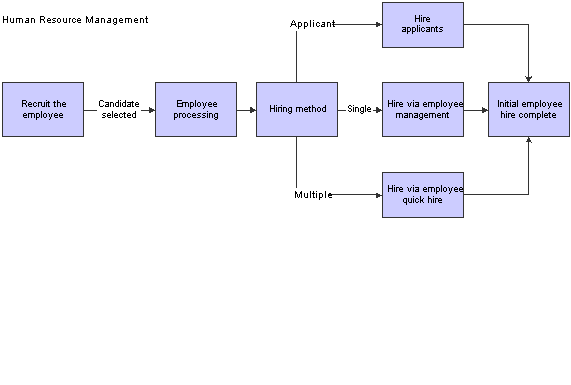Understanding Applicant Tracking
One opening in the company can result in hundreds of resumes. You need to be able to quickly identify the applicants who meet the requirements of an open requisition. With Human Resources Applicant Tracking, you can manage extensive information about each applicant, such as desired salary, available date, education, prior experience, and foreign language proficiency.
You can then search for applicants who meet specific criteria. The systems extensive search capabilities help you reduce a list of applicants to those whom you want to seriously consider. You can then provide the managers with a list of qualified applicants.
You can use the detailed information that you track about applicants to perform these tasks:
Link applicants to requisitions.
Evaluate the qualifications of each applicant.
Meet government reporting requirements.
You might track standard types of applicant information:
Personal information, such as name, address, and tax identification number.
The job and position for which each applicant applies.
Governmental reporting information, such as that required to meet Equal Employment Opportunity (EEO) and Canadian Employment Equity requirements.
The system also gives you the flexibility to track any other type of information that the organization needs. You can use the supplemental data feature to track entire categories of auxiliary information for applicants, such as job skills or professional licenses.
When you hire an applicant, the system automatically updates the persons employee master record to indicate that he or she is an employee. You can also set up the system to require someone to enter payroll information before the hiring process is complete.
This diagram illustrates the applicant tracking process:
